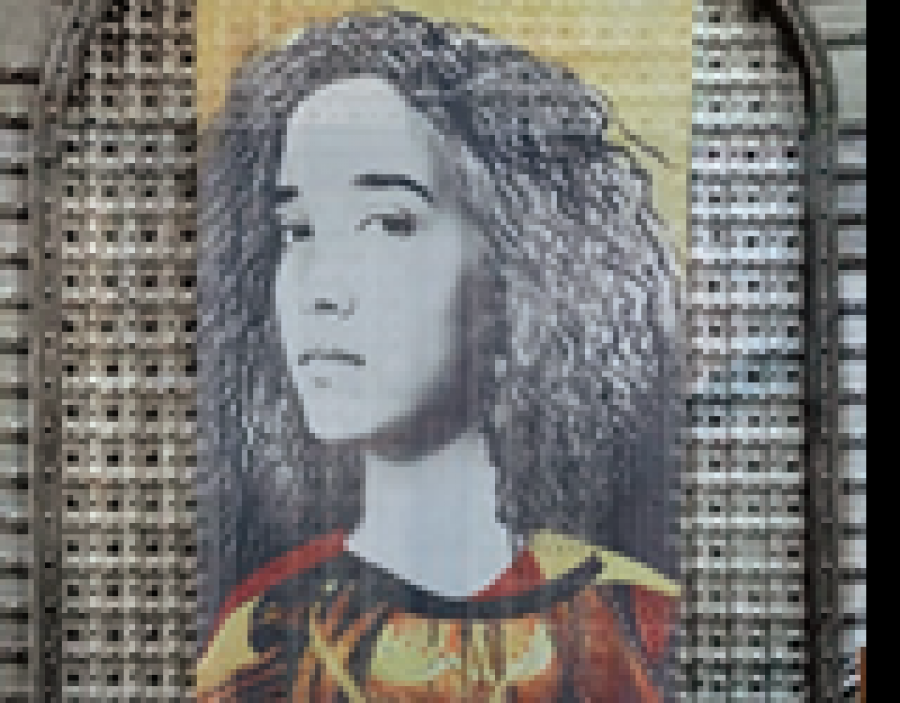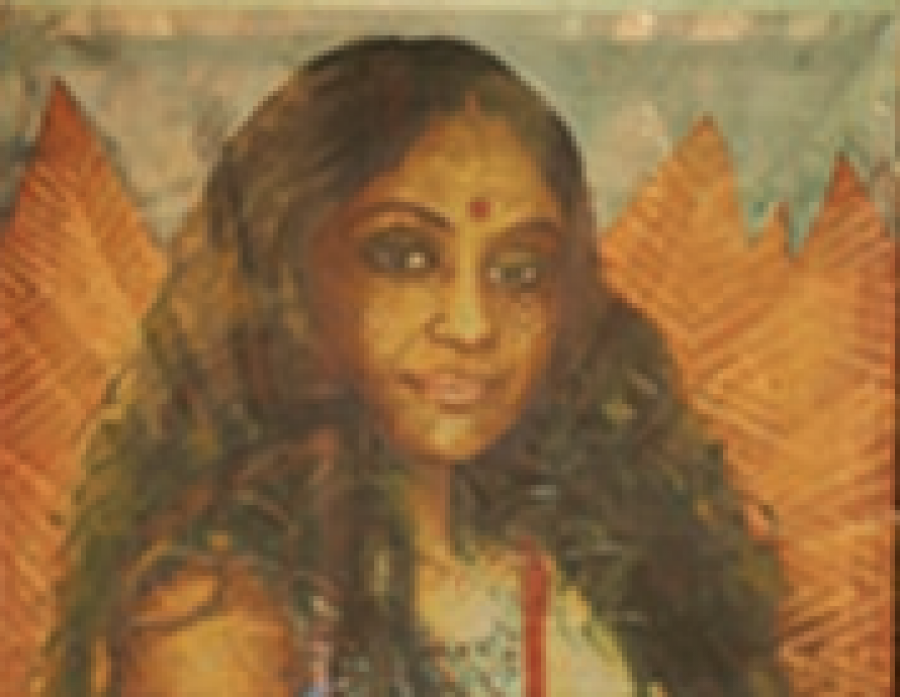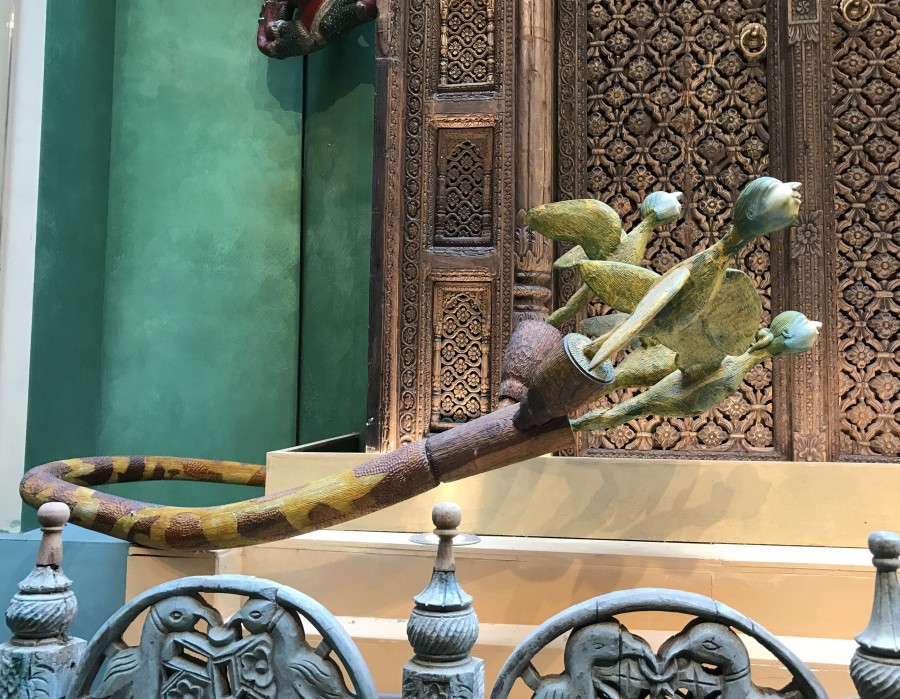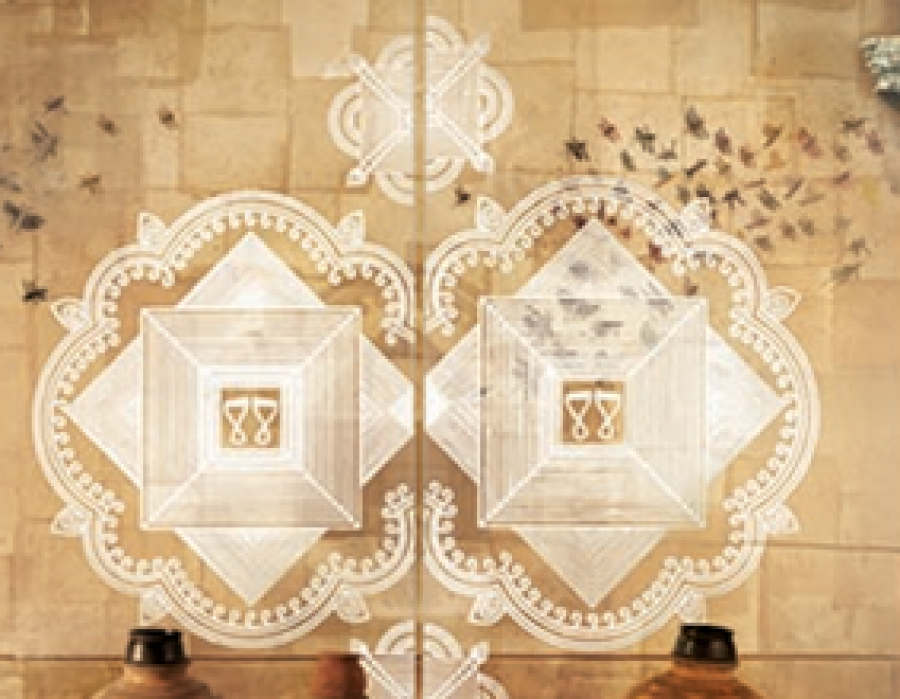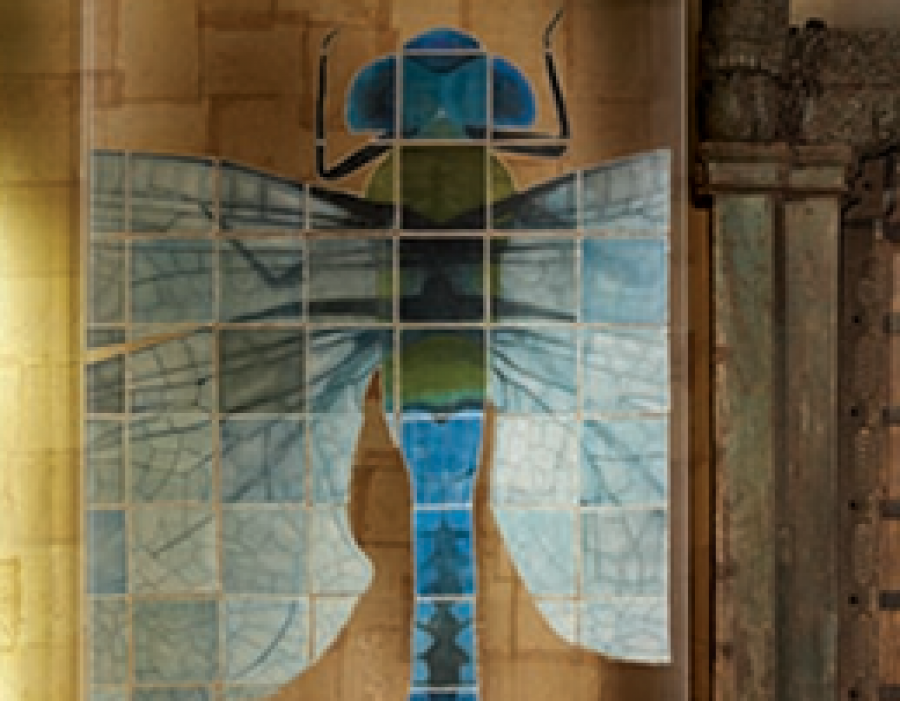WALKING BETWEEN GATE NO. 40 & 45
‘India Greets’ is designed as a tableau of India as one of the first installations which visitors encounter as a welcoming gesture to Jaya He Museum is a densely populated vista of diverse traditional doorways, facades, faces and fascias.
Sourced from across the country, they are a language of motifs, designs, and traditional crafts skills. They together offer a testament to cultural diversity of India as well as the often intangible commonalities that transcend ethnicity, religious affiliations, and geography. These are replete with symbols of welcome and protection – lotuses, sacred geometries, angels, ancestral figures, and celestial guardian figures.
FACES & FACIAS
Rajeev Sethi Scenographers
India lives by the maxim: ‘Atithi Devo Bhava – the guest is god.’ The doors are the thresholds to India’s culturally rich and diverse world. On a green facade you see more than 100 such objects from the 17th to 19th centuries. Most of them are from the central and western Indian states of Madhya Pradesh, Gujarat and Rajasthan. An intricately carved three-panelled Jharokha or a ventilator belonged to a Gujarat haveli or mansion. The elaborately carved doors towards the right are the main entrance into a home, while the less intricately carved doors are from rooms inside. The larger the doors, the more magnificent the house. The door with 4 pillars. The multi-coloured pillars from Gujarat are decorated with floral motifs. Pillars such as these are both functional and decorative. They bear the load of the structure and their elaborate carvings depict socio-religious beliefs. Can you spot? Look towards the right. This was made by Kerala’s skilled carpenters who restored these doors made new pillar to match an old one. It took a lot of effort to put together the installation. Elaborate drawings were made in which each door, porch, window or lintel had its place. Putting up the massive doors against the wall was quite a feat of engineering! The detailed carvings on the panels around the doors. They are replete with lotuses, angels and other symbols of welcome and protection. Masks from different parts of India look out from between the doors, warding off the evil eye. Faces & Fascias extends down all the way to the levels below. It is part of the India Greets theme at the Jaya He Museum. The sixty-foot high wall displaying artworks and artefacts. This tableau of doors underlines the tireless work of the artists and artisans who came together for this enormous project. Each of these weighty artefacts was carried across hundreds of kilometres to Mumbai where they were painstakingly restored at a sprawling mock-up site nearby. The wooden doors came in multiple pieces. As part of this huge revival project, the discarded pieces from abandoned havelis were gathered and restored. And the final outcome was this threshold to India, an entrance that embraces all visitors.
VARIOUS
LATE ROBYN BEECHE AND ANJOLIE ELA MENON
In this unique project, well known Australian photographer Robyn Beeche and celebrated indian painter Padmashree Anjolie Ela Menon collaborated to create 8 art works for the Mumbai Airport. The imagery consists of figurative depictions of Indian subjects to include men, women, children and animals in realistic and surreal juxtapositions, meant to create an air of mystery and magic. Large fabric panels varying in size have been printed on by a renowned printer in Dubai to ensure perfect clarity, are UV and fire resistant and are hot-cut on the edges. These panels are hung in front of a series of ancient and antique carved doors, monumental in size. When lit, the transparency of the fabric lends a feeling of ephemeral and illusory projections to the imagery.
TIME THE RIVER
KARL ANTAO
With the flow of time, while things erode and corrode, above all creation sustains itself and there is a growth within the physical and mental aspects of life. Like the seeds growing into a tree, the human mind and body too grows and expands with the ever changing cloud of time, which in a way is the only constant and witness to this journey. The result of this journey of man is the ongoing wheels of civilizations telling the stories of human survival and their pursuit of excellence in which ‘time’ is the conductor of the ever changing orchestra called “ Life”.
EXCAVATION
PRAYAS ABHINAV
This installation reflects on old habits that die hard, about the characters once animated, that won’t rest easy. The conversation between the women reflecting on the mundane and the meaningful continue in a recursive cycle; like history, stories which begin and begin again.
SHIFTING HOAMSTEADS
TANUJA RANE
The locusts, mainly tropical grasshoppers or dragonfly with strong powers of flight, arrive in sudden swarms and disappear just as quickly as they come. Having survived over 300 million years on this earth, for Tanuja Rane, dragonfly represents an illusory metaphor of the city as pulsating, iridescent and a fragile story of existence and survival. This work is a tribute to the heroic spirit of Mumbai and its people from various social and economic backgrounds, its diversity and to the stories of unlimited hope, dreams and desires. In this installation, the locked doors represent the cityscape, the urban existence in which the thresholds many times are bereft of Kolams and Rangolis which are otherwise ritually created in courtyards of homes by rural women as auspicious symbols to consecrate the space.
These metaphors indicate our existence in the uncertainty of the postmodern urban lifestyle. A reality which overpowers our finer senses and creates an unusual relation between our spiritual journey and survival needs. It reflects on our contemporary lives wherein we conceal fundamental truths as individuals and reveal edited fragments of ourselves.



